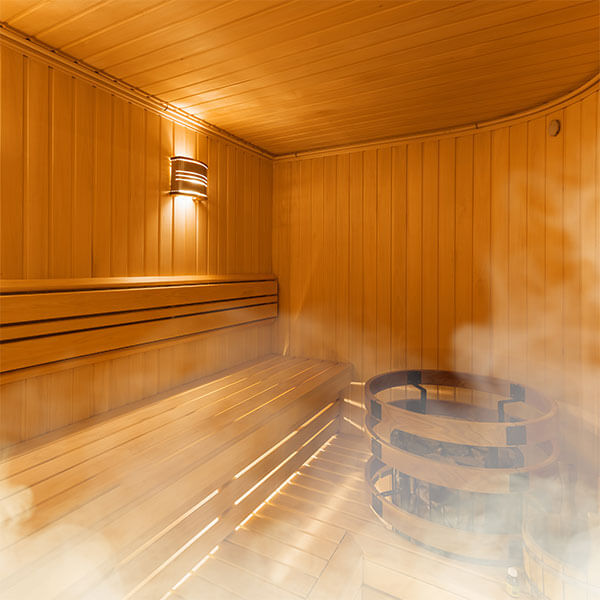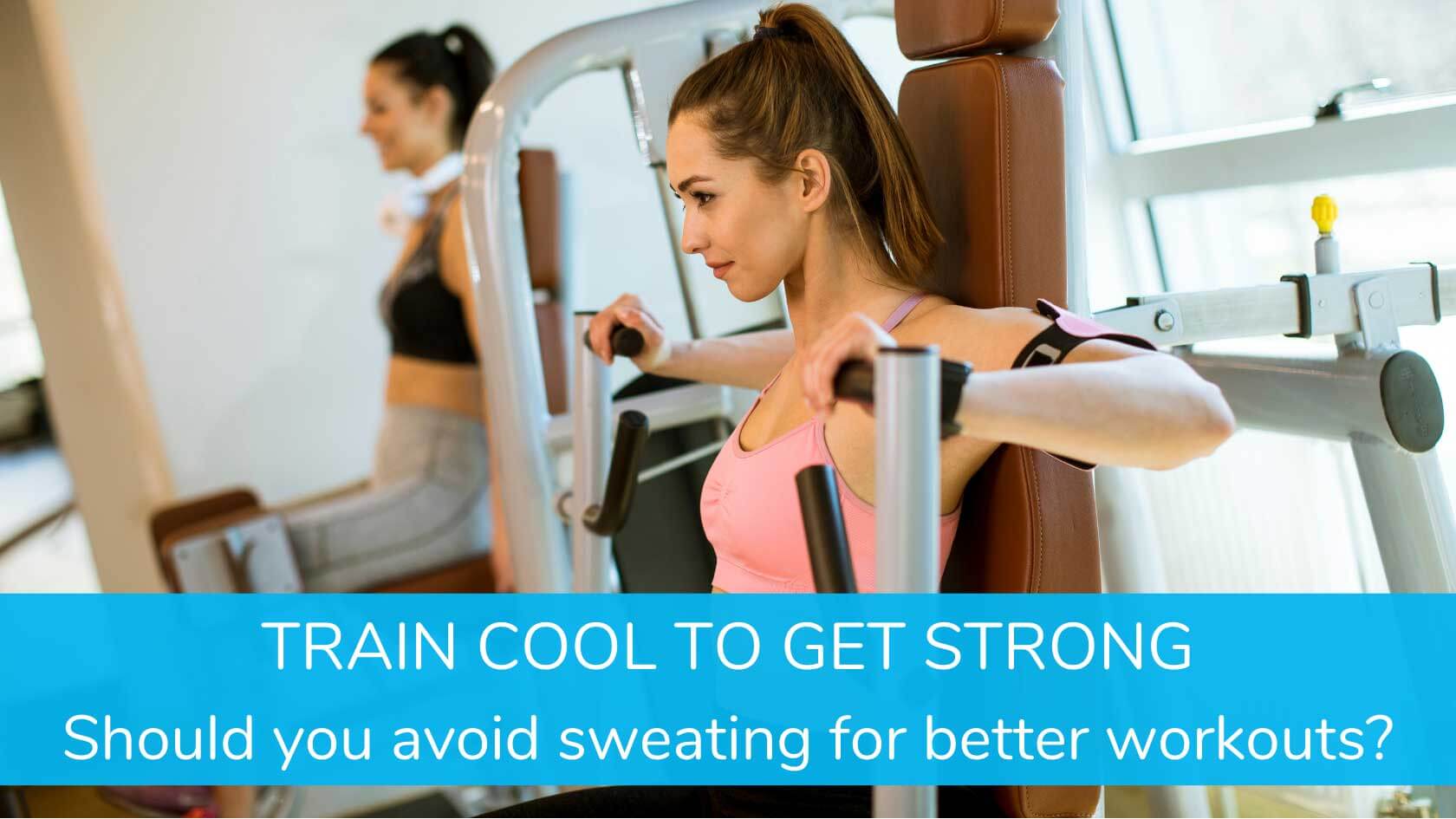This article applies to anyone interested in getting stronger efficiently, but is written as the third article in a series on resistance training for EDS and POTS/Dysautonomia because avoiding overheating is of particular importance to this group. It is not medical advice and is presented for informational purposes only. Consult with your medical provider before adopting any exercise program or sauna/heat exposure regimen.
“How do I know that the workout was good unless I sweat?”
Part of me gets excited when I hear this from clients, because it means the person understands the value of hard work. But the idea that sweating is necessary comes from the vague way people approach exercise. We don’t focus on the specific changes we’re trying to get our bodies to make, and instead settle for some general idea of “hard.” This question is like asking “don’t I have to have ripped calluses on my hands to get a good workout?” It’s well-meaning, but misguided, and implies a lack of clear intentions about what we are trying to accomplish.
As an example of these clear intentions, let’s take resistance training. Proper resistance training is the practice of combining tension and time to cause muscle fiber recruitment and fatigue. Once the maximum number of fibers are sufficiently fatigued, we achieve our goal of signaling the body to build and maintain expensive muscle. Ripping calluses is obviously not necessary to make our muscles bigger.
But do we need to sweat to make our muscles fatigued? Is getting uncomfortably hot a sign of success?
Contracting muscles produce heat, and too much heat causes problems.
No machine is perfectly efficient. Like our car engines, our muscles waste energy as heat when they burn calories to produce force. The more force we produce, and the more times our muscles contract, the more heat is wasted. And if too much heat accumulates, our core temperature rises outside of its optimal range, causing our muscles to function less efficiently. Not unlike your vehicle, overheating causes engine shutdown.
And this sounds like a good thing, right? After all, we want to make exercise “hard,” and pushing until our bodies shut down sure sounds hard. But overheating doesn’t improve the quality of our workouts, it actually hurts our ability to recruit muscle fibers! Let’s find out why.
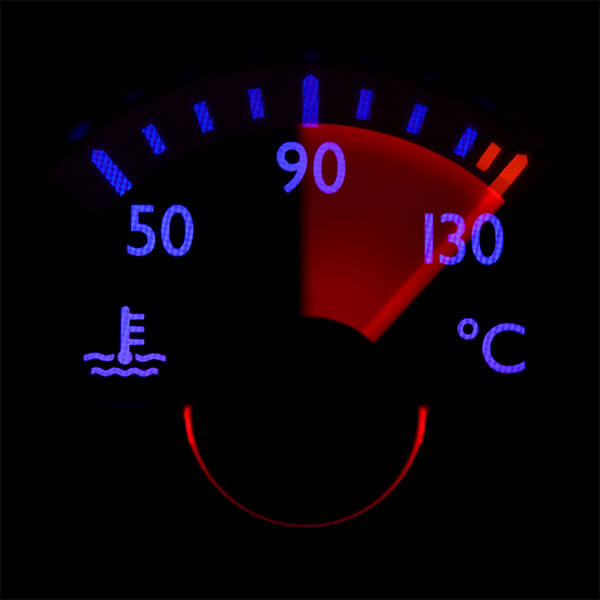
Sweating is how our body keeps cool to prevent overheating.
Sweating is simply the body’s response to this overheating. As we sweat, the evaporating moisture pulls heat with it as it leaves our skin, controlling our core temperatures to keep us safe and to enable optimal functioning. Sweating only happens when we overheat, and really has nothing to do with how much recruitment and fatigue the muscle is experiencing.
A muscle can become totally exhausted without overheating (imagine doing pushups to exhaustion in a walk in freezer), and you can also be pouring sweat without fatiguing your muscles at all (imagine lying in a sauna).
And if we can achieve deep muscular fatigue, and the resulting strength adaptations, without sweating, which we can, than sweating is simply an incidental part of physical exertion, not a requirement for getting stronger.
But this does not mean sweating is pointless.
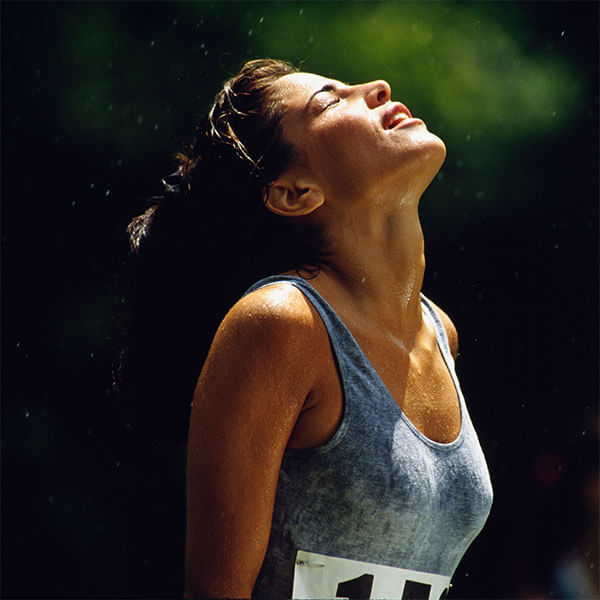
Sweating is a “use it or lose it” ability.
Sweating is actually a beneficial, trainable adaptation – you can get better at sweating through repeated bouts of heat stress, such as sitting in a sauna. In fact, when someone undertakes a running program and feels their fitness improving, a big part of this improvement can be their body getting better at preventing overheating through sweating, which allows them to run for longer distances.
But anything that can get better can also get worse. For most of us, our lives are so comfortable and climate-controlled that heat stress can become a rare thing. And we know our bodies don’t like unnecessary and expensive “equipment” hanging around – hence the need for strength training to preserve muscle mass!
As a result, if we go long enough without the need to sweat, our body will simply reduce our ability to sweat.
Those with POTS/Dysautonomia are uniquely vulnerable to heat stress.
This is a particular issue for those with autonomic dysfunction – a condition in which the “passive” systems of our body (ranging from sweating to digestion) don’t work correctly. A reduced ability to sweat can be a real problem as we get into the summer months, where warm temperatures can feel incredibly stifling, making it difficult to breathe or tolerate being outside.
All this is to say, it is good to be able to sweat, and to try to build that capacity up. For many people, working directly to increase heat tolerance through sauna treatments (with the approval of your physician of course) can make it much easier to enjoy life outside in the summer.
One client of mine who suffers from POTS and EDS actually was able to greatly improve her own tolerance to heat stress through the use of an infrared sauna blanket at home!
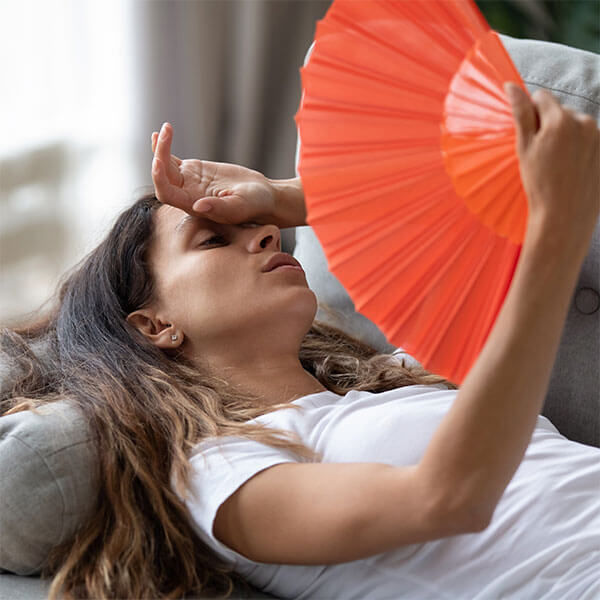
Building strength and heat tolerance at the same time is sub-optimal.
But if we try to build heat tolerance at the same time that we’re trying to build muscular strength, we’re going to be frustrated. If you are sweating a lot as your workout progresses, this means you are overheating. Overheating drastically reduces the body’s ability to work hard and turn on the largest number of muscle fibers. This hard work and deep recruitment is necessary to get stronger.
To get technical, whole-body “systemic” fatigue from overheating makes it harder to recruit our strongest muscle fibers. Again, consider how a car’s engine can shut off if it overheats. In a similar way, our nervous system inhibits our muscles to prevent heat exhaustion.
As you get hotter and hotter, the workout will actually become less and less effective at making you stronger, until your final sets are almost pointless because you are too systemically exhausted to recruit much muscle at all. Workouts like that are exhausting but may not actually stimulate the strengthening we desire.
Training cool keeps the focus on building strength, especially for those with POTS.
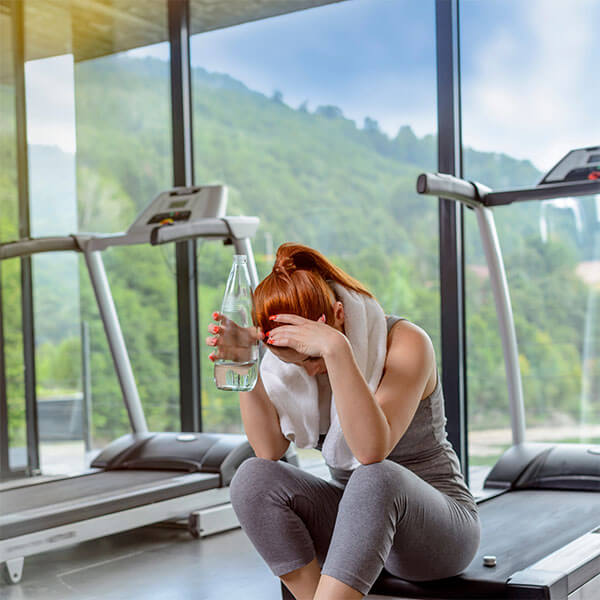
Instead, we should try to remember what our focus is with resistance training: getting stronger. And if that’s our focus, training in a very cool environment is the best way to ensure that we can achieve deep, specific muscular fatigue without overheating. By staying cool, we ensure that each set stays really productive.
This goes double for people with autonomic dysfunction (i.e. POTS), where overheating doesn’t just cause fatigue, it can be quite debilitating, completely derailing any chance of a productive workout. For these people, training in a cold environment is essential for generating the efforts necessary to stimulate muscles effectively.
Even Professional Athletes know that colder temps mean better results!
Professional athletes train with specialized tools to cool their palms and lower their core temperatures, because it enhances their recovery. Palm cooling, and other tools to lower core temperature, have been clearly shown to improve both our performance during, and response to, strenuous exercise. This is because keeping our core temperatures down reduces the feeling of exhaustion, so we can get more out of our workouts.
Though “warming up” can improve short term performance, it clearly hinders sustained effort, and when we’re trying to get the most out of a workout, we care more about our ability to work hard and create a stimulus than our ability to set records. This is why, at StrengthSpace, we train in a very cool environment. At a chilly 60 degrees, sweating is rare and minimal, which means every set of exercise we do is productive. And clients with dysautonomia can enjoy a great workout without the dizziness or respiratory challenges that can come from truly overheating. And as an added bonus, a great many of our clients are able to simply throw their street clothes on and go right back to the office without the need to shower.
Again, I’m not saying sweating is bad.
Heat stress can be an important part of a health regimen. In the same way that getting cold enough to shiver enhances brown-fat oxidation, and being exposed to UV radiation enables vitamin D production, getting hot enough to sweat is probably worthwhile for the variety of benefits related to heat-shock protein activation. And this is why deliberately sweating through the use of sauna treatments can be so beneficial.
But if our goal is a stronger body, sweating isn’t a necessary part of the workout, and keeping temperatures cool enough to minimize sweating can actually help many people get better results if their goals are specific to getting stronger, building bone density, and preventing muscle loss.
If you’re skeptical, I understand. Click the link above to sign up for a free workout. We’ll show you just how intense and effective a cool, sweat-free workout can be, guaranteed!
